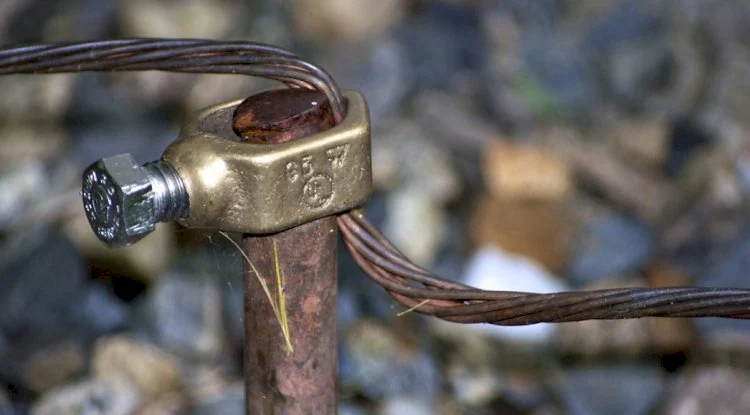Can i Use The Same Earth Rod For Both Earthing And Lightning Arrester: In the realm of electrical safety, a common question arises: can a single earth rod serve the dual purpose of both grounding and safeguarding against lightning strikes?
This inquiry stems from the desire to optimize resources and streamline installations, but it’s crucial to understand the potential implications and safety considerations associated with this practice.

The Role of Earth Rods:
Earth rods, also known as grounding rods, play a pivotal role in electrical systems by providing a path for excess electrical energy to dissipate harmlessly into the ground.
They ensure the safety of equipment, people, and structures by preventing the buildup of dangerous voltages and facilitating the operation of protective devices like circuit breakers.
Grounding is essential for maintaining electrical stability and minimizing the risk of electric shock and fire hazards.
Lightning Protection and Earth Rods:
Lightning strikes are unpredictable and can cause significant damage to buildings and equipment. Lightning protection systems, which include lightning rods or air terminals, capture the energy from lightning strikes and safely redirect it into the ground.
Earth rods are an integral component of these systems, helping to disperse the immense electrical energy generated during a lightning event.
Using a Single Earth Rod for Both Purposes:
While the idea of using a single earth rod for both grounding and lightning protection might seem appealing, it’s important to approach this concept with caution. Grounding systems and lightning protection systems have distinct requirements, and combining them into a single rod can potentially compromise their effectiveness.
Safety Considerations:
- Compatibility: Grounding systems and lightning protection systems have differing design criteria. A single earth rod might not meet the specific requirements of both systems simultaneously, leading to suboptimal performance.
- Fault Current Handling: Lightning events can generate extremely high currents. A grounding system must be able to handle fault currents without causing damage. Using a single earth rod might not provide adequate fault current dissipation for both functions.
- Corrosion and Degradation: The intense energy of a lightning strike can accelerate corrosion and degrade the earth rod over time. If the same rod is used for grounding, it might deteriorate faster, affecting its overall performance.
Best Practices:
To ensure optimal safety and performance, it is recommended to use separate earth rods for grounding and lightning protection purposes. This approach guarantees that each system is tailored to its specific requirements and can effectively fulfill its intended role.
Conclusion:
While the concept of using a single earth rod for both grounding and lightning protection may appear convenient, it poses potential risks to the overall effectiveness of these critical systems.
Separate earth rods designed for each purpose offer a safer and more reliable solution, ensuring the protection of people, equipment, and structures against electrical hazards and lightning strikes.
Prioritizing the distinct requirements of grounding and lightning protection systems ultimately leads to a more robust and resilient electrical infrastructure.
